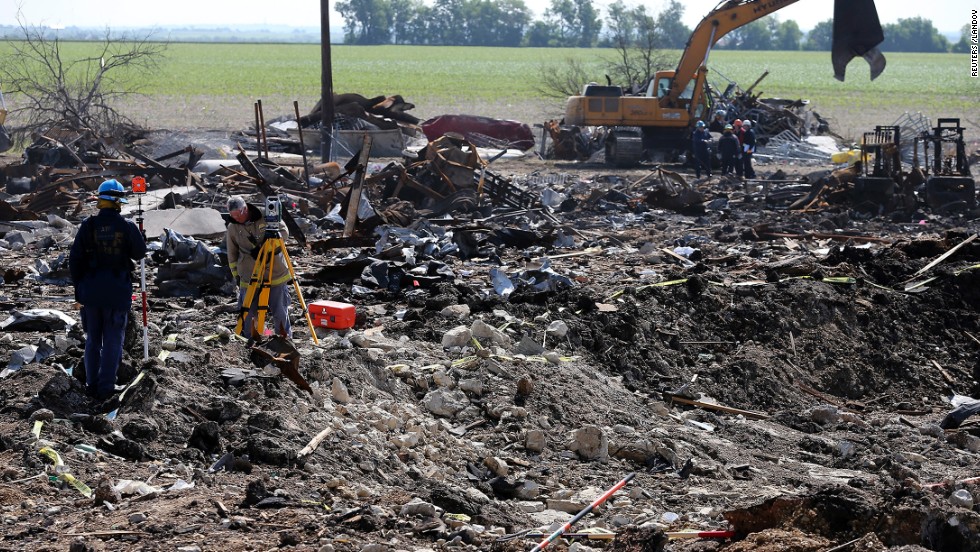Disaster Preparedness– How Ready are You?
In the past 2 weeks, the United States has experienced Hurricanes Harvey and Irma. Both hurricanes struck the Southeastern parts of the USA, causing catastrophic damage to homes, buildings, oil refineries, infrastructure, power, and telecommunications grids as well as displacing over 150, 000 residents. Some of these residents have no place to return. Their homes were destroyed and they no insurance to finance rebuilding.
The recent computer hacking of Experian is a second example of a disaster. Although this is not a “natural disaster”, the loss of personal information is equal to, if not greater than, the damage of a natural disaster.
In the Bakken, we are not faced with hurricanes. However, floods, fires, wind and hail storms, tornados, earthquakes as well as severe arctic storms are all possible. The key question that must be asked is our title, How Ready Are You?
Just because you are in the Bakken, do not think you are impervious to some natural disaster. No, it will probably not be a hurricane. However, the other disasters can, and most probably will occur in some form or fashion. When they do, will you be ready to respond?
What do you need to do to prepare for a disaster? Here is a checklist that we use with our clients to ensure that if a disaster strikes, they are ready to remain in operation and continue to earn money.
- Develop a disaster plan. Identify all possible known disasters that may occur in your organization. Here is a list. Though not all inclusive, the list provides a starting point for plan development:
- Fire
- Flood—either natural or man-made, i.e., a pipe bursting, drain overflow
- Wind/Hail/Rain/Arctic Storm
- Loss of electricity, water, power, gas, waste disposal
- Earthquake
- Embezzlement—either corporate funds, intellectual property, or company trade secrets
- Fraud
- Employee loss, defection, lack of adequately trained and responsible employees
- Data breach, computer hacking
- Explosion
- On site employee shooting
- Loss of communications, data connectivity, satellite usage
- Transportation interruption
- Vehicle catastrophe- wreck, explosion, lack of proper vehicle
- Communications strategy to address each element listed above.
- Identify under each section in A above, the following actions:
- Who is responsible?
- What he/she is responsible for and what they are to do
- When these disaster mitigation actions are to begin
- Where these disaster mitigation actions are to transpire, i.e., at which location
- How will each action be achieved/accomplished?
2. This plan should be developed by both management and work force employees. There are no heroes in disaster recovery—it is an all hands-on deck approach
3. Exercise the plan on a semi-annual basis. Turn off the power and see how you can operate. DO NOT simulate—try it. If the power is out, you will have to use pencil and paper to maintain operations. Do you have pencils and paper? Seems like a simple idea. However, rest assured, it is not.
4. If the power is out and it is -30F in the office, how do you work?
5. Do you have emergency rations to sustain the workforce for an extended time if workforce employees are restricted to the site or working location? Do the rations have a current shelf life? Are there adequate sleeping accommodations, i.e., sleeping bags, blankets, cots available?
6. Train the workforce on each part of this plan. This is something that needs to be done all the time. This is not a One and Done This is something that should be emphasized all the time. Yes, there are costs involved. However, the cost of preparation is much less than the cost of fumbling haphazardly after a disaster strikes.
7. Alternate worksite location. If your primary worksite is damaged, where can you go to maintain operations? Does the alternate worksite have all the equipment and information necessary to continue operations?
Your organizational culture is important in ensuring that all workforce members are actively involved in the development, management, and execution of a disaster recovery plan. Many firms and managers often think, “That is fine for others, however, we don’t need such a plan.” Nothing could be farther from the truth. Everyone needs an active and vibrant disaster recovery plan.
If your organization has such a plan, exercise it, and see if there are any weak points or loopholes. My decades of experience suggest that I can find some critical loopholes that were not initially considered when the plan was developed, or are out of date because the world has changed since the creation of the plan.
Check with your insurance agent to ensure that you have the proper insurance and adequate coverages for each possible incident identified in A above. Yes, insurance is expensive and is a necessary business expense. However, it protects your future. Insurance is not a business expense that can be deferred. Your insurance agent can also address what, if any, federal or state damage recovery programs are available and may be applicable to your business or operation.
Now is the time to begin planning for a disaster. Having a plan, understanding the plan, and knowing who is responsible for each element of the plan is essential to maintaining operations.






